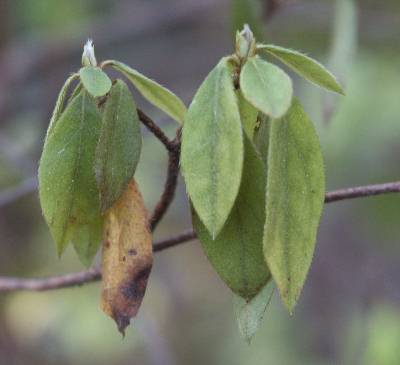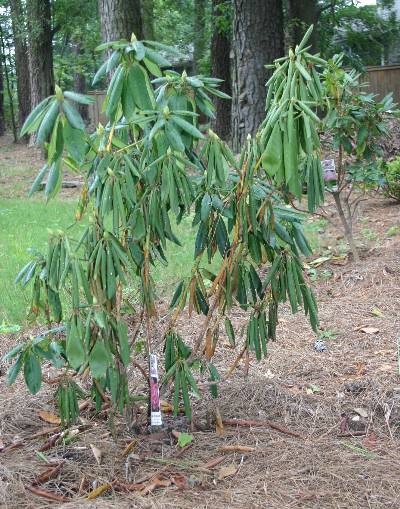





Q: I moved into my house in an older neighborhood in 1996. One of the selling factors was that I had seen large azaleas blooming there the previous spring. Since I moved in, though, one by one my azaleas are dying! I have half sun in the morning and hot sun in the afternoon during summer. I trim the shoots after they have bloomed, which my mother told me to do, and I did not let the plants dry out last summer. Do they just die on their own after so many years? What gives?
A: One of my primary garden rules is never to argue with Mama, whether it be your own mother or Mother Nature. Slow die-back on azaleas and rhododendrons is a pretty common occurrence. The most common cause is the disease Phytophthora cinnamomi .
That tongue-twisting name is usually shortened to “azalea root rot”. The fungus inhabits almost all soil – only good cultural practices and natural disease resistance of a plant keeps azaleas and rhododendrons healthy.
As far as resistance goes, our most popular azaleas: ‘Coral Bell’, ‘Snow’ and ‘Hershey Red’ are very susceptible to the disease. Others, like ‘White Gumpo’, ‘Formosa’ and ‘Hinodegiri’ are resistant.
Rhododendrons vary widely in their resistance too. I found a nice list of resistant cultivars at the Auburn University Web site.
In my experience, most azalea/rhododendron problems are caused by them growing in clay soil. They are woodland plants….. and they demand highly enriched, fast-draining soil. You can help all members of the azalea family fight disease by adding plenty of soil conditioner to your clay soil before planting. Both composted hardwood and pine bark suppress root rot. If you have an azalea or rhododendron already growing in your landscape, you can do several other things to help it combat disease.
You mention that your plants didn’t dry out last summer and that is excellent treatment. Remember that watering deeply once per week allows the soil to dry out between times and thwarts fungal growth. Try fertilizing with an organic nutrient source instead of synthetic fertilizer. Scatter a half-pound of cottonseed meal evenly under the branches of each plant in April after raking out all of the mulch. Replace the mulch with fresh pine straw.
Once you see the symptoms of leaf rolling, wilting and limb dieback, there is little you can do for your azaleas other than prune out the diseased limbs. Mother Nature may seem cruel but Phytophthora dieback is her efficient method of winnowing out the weakest and least adapted plants.
see
Phytophthora on Azaleas and Rhododendrons
Root Rot



Rhododendron wilt
Copyright © www.100flowers.win Botanic Garden All Rights Reserved